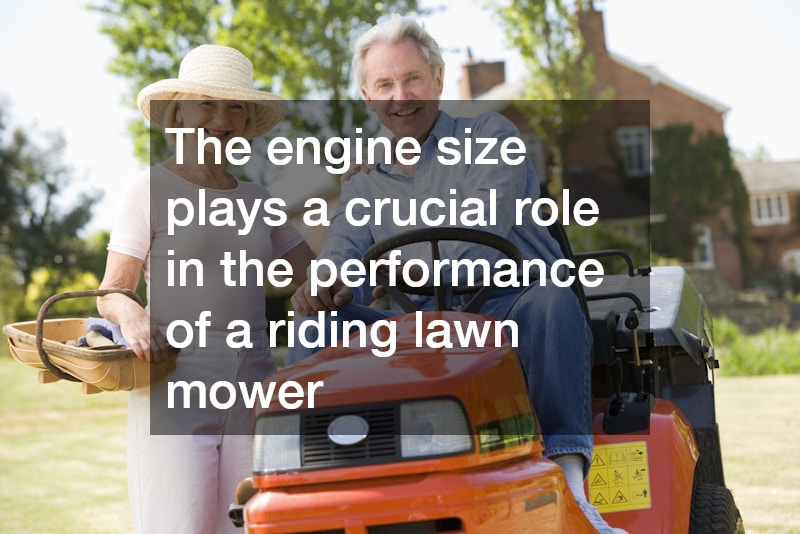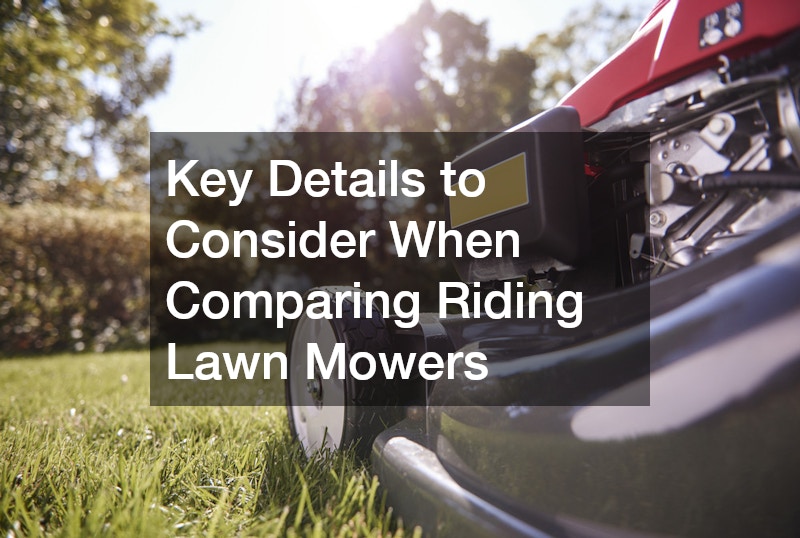There are a few essential details to keep in mind when comparing riding lawn mowers to help you make an informed decision for your lawn care needs. Choosing the right riding lawn mower can make all the difference in maintaining your yard efficiently and comfortably. With so many models, features, and styles available, it’s important to take time to compare your options carefully. Factors such as engine power, cutting deck size, transmission type, and comfort features all play a role in determining which mower best suits your property’s size and terrain.
Additionally, considering aspects like fuel efficiency, maintenance requirements, and warranty coverage can help ensure long-term satisfaction with your purchase. By evaluating these details, homeowners can make a well-informed decision that balances performance, durability, and value.
Types of Riding Lawn Mowers
There are primarily three types of riding lawn mowers: garden tractors, lawn tractors, and zero-turn mowers. Garden tractors are robust machines suitable for larger plots and can often handle attachments like plows and seeders. Lawn tractors are more versatile for residential lawns, combining mowing capabilities with a moderate engine size.
Zero-turn mowers have gained popularity due to their high maneuverability, allowing you to pivot on the spot and easily navigate around obstacles. They usually have a wider cutting deck, which can accurately trim grass in tight spaces. Each type has its strengths depending on your lawn size and terrain type.
When comparing riding lawn mowers, consider your mowing habits and lawn care tasks. If your yard has many trees or shrubs, a zero-turn mower could save substantial time. For larger lawns stretching over uneven surfaces, a garden tractor might be the optimal choice.
Ideal Engine Size
The engine size plays a crucial role in the performance of a riding lawn mower. Engine sizes for riding lawn mowers typically range from 14 to 30 horsepower. Smaller engines work well for flat terrain and smaller yards, while larger engines handle tougher conditions, like hilly landscapes or thicker grass. Recognizing your lawn’s specific needs will help you choose accordingly.
Beyond the raw horsepower, consider the engine type: single-cylinder versus twin-cylinder. Twin-cylinder engines generally offer more torque and can better manage large, sophisticated lawns with varying grass lengths. Additionally, think about the maintenance requirements of different engine sizes, as larger engines may require more upkeep.
In evaluating engine size, also look for features like fuel efficiency and noise levels — essential for a more pleasant mowing experience. A mower with a powerful engine yet lower vibration and noise will make your lawn care less of a chore.
Importance of Cutting Width
Cutting width impacts the efficiency of mowing. The cutting width of a riding lawn mower typically ranges from 30 inches to over 60 inches. A more extensive cutting width allows for fewer passes across your lawn, translating into a quicker mowing job. However, while a larger deck may seem beneficial, consider how wide your paths and gates are.
Balancing cutting width with maneuverability is crucial, especially in yards with many obstacles. A mower that is too wide can struggle to navigate around trees, flower beds, or garden ornaments effectively. In contrast, a narrower deck allows more precise cutting but might take longer to mow larger areas.
Moreover, the design of the cutting deck also matters. Some models feature a deck that extends beyond the wheelbase for better cutting efficiency and side-discharge capabilities. This design becomes a significant advantage when tackling lawns with varying terrain and foliage.
Features to Look for in a Riding Lawn Mower
Riding lawn mowers come with a variety of features. Standard features in riding lawn mowers include adjustable cutting heights and comfort seats. Adjustable heights help you tackle varying grass lengths and types, while a comfortable seat can make long mowing sessions bearable. Consider features like armrests or ergonomic design for added convenience.
Modern mowers also offer advanced features, such as built-in GPS and Bluetooth connectivity, enabling precise tracking of mowing patterns and maintenance alerts. While these features can add to the cost, they may significantly improve your mowing experience over time.
Lastly, think about any additional attachments that might suit your garden. For instance, a garden tractor may support implements like carts or spreaders, increasing its utility. This added versatility can be a substantial advantage when comparing different models.
By considering these key details when comparing riding lawn mowers, you can make a well-informed purchase that suits your lawn care needs and budget. When comparing riding lawn mowers, the small details often make the biggest difference in overall performance and convenience. Taking the time to assess your lawn’s specific needs, the mower’s key features, and long-term operating costs can help you avoid unnecessary frustrations and expenses. A well-chosen mower not only saves time and effort but also provides a smoother, more enjoyable mowing experience. Ultimately, understanding what to look for allows you to invest confidently in equipment that keeps your lawn looking its best season after season.



